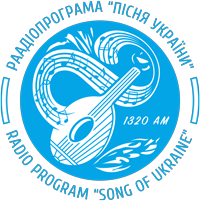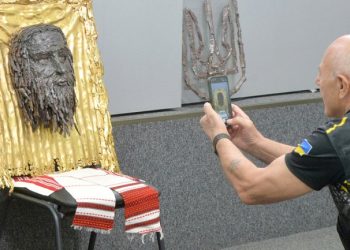Pope Francis is currently in the hospital with severe pneumonia. In 2024, the pontiff approved a simplified funeral without some mysterious rites and rituals.
After the death of the Pope, a series of events and measures begins, which have been perfected over the centuries during the farewells to hundreds of other pontiffs. Part of the Vatican traditions dates back to ancient Rome. What is the traditional ceremony of farewell to the pope, Politico told, reports “24 Channel”.
The death of the pope is confirmed by the camerlegno
Traditionally, the death of the pope is confirmed by the camerlegno – a senior Vatican official. Currently, this position is held by Irish-born Cardinal Kevin Farrell.
According to tradition, it is he who should visit the dead in his private chapel and call him by name to try to wake him up.
Nowadays, this is just one of the traditions, as doctors will confirm the pontiff’s death using standard medical methods.
“An oft-repeated myth claims that the camerlegno also gently taps the pope’s head with a silver gavel. The Vatican has long denied this,” writes Politico.
If the pontiff does not respond to the name, then his signet ring, which is used for official papal documents, is destroyed. This marks the end of the pope’s reign. The papal apartments are also sealed.
The camerlegno notifies the College of Cardinals, the governing body of the church’s highest officials, of the pontiff’s death before it is announced to the world in a Vatican statement to the media.
The hearts of some popes are kept in a church in Rome
After the death of a pope, Novendalia begins, a nine-day period of mourning. Italy also usually declares a period of national mourning during this time.
“His body will be consecrated, dressed in papal vestments and displayed in St. Peter’s Basilica for public viewing, where hundreds of thousands of people will line up to pay their respects, including foreign dignitaries and world leaders,” the publication says.
Traditionally, the pope’s body was displayed on a raised platform. However, Francis has ordered that it lie in an open coffin without such pomp.
Historically, popes have often been embalmed. Some even had their organs removed before burial.
For example, in a church near the Trevi Fountain in Rome, the hearts of more than 20 popes are kept in marble urns. They are considered holy relics. However, in our time, this practice has “gone out of favor.”
Daily requiem services will be held in St. Peter’s Basilica and throughout the Catholic world.
At this time, the Vatican is also entering a transitional period called “Sede Vacante,” which means “vacant throne.” For the time being, the church’s governance is temporarily transferred to the College of Cardinals. But no major decisions can be made before the election of a new pope.
The Pope’s Burial
The Pope’s funeral is likely to take place in St. Peter’s Square on the 4th to 6th day after his death. The service will be led by the 91-year-old Dean of the College of Cardinals, Giovanni Battista Re.
“Traditionally, the pope is buried in the Vatican Grottoes, the crypts beneath St. Peter’s Basilica. Nearly 100 popes are buried there, including Pope Benedict XVI, Francis’ predecessor, who resigned in 2013 and died in 2022,” Politico added.
However, in 2023, Francis said that he had chosen the Basilica of Santa Maria Maggiore in Rome as his final resting place. It is one of his favorite and most visited churches.
So it looks like Francis could be the first pope in recent memory to be buried outside the Vatican.
Also, according to tradition, pontiffs were buried in three coffins, one inside the other: the first was made of cypress, the second of zinc, and the third of elm. However, Francis ordered that he be buried in a single coffin made of wood and zinc.
He will also likely be buried with his Rogito, a 1,000-word document that tells the story of his life and reign.
Conclave to meet in a few weeks
Two to three weeks after the pope’s funeral, the College of Cardinals will gather in the Sistine Chapel to hold a conclave. This is the highly secretive process of electing a new pontiff.
“Theoretically, any baptized Roman Catholic is eligible to be a pope, but for the past 700 years, the pope has always been elected by the college of cardinals,” the publication notes.
Most of the 266 pontiffs have been Europeans. But Francis was born in Argentina and became the first non-European pope in 1,300 years.
The candidates for the papacy do not campaign openly. Vatican observers refer to cardinals who have a good chance of becoming popes as “papabile.”
“On voting day, the Sistine Chapel, with its famous ceiling painted by Michelangelo, is physically fenced off, and the cardinals, sworn to secrecy, are locked inside,” Politico writes.
Only cardinals under the age of 80 can vote. There are about 120 of them. They will vote for their chosen candidate in secret, writing their name on a ballot and placing it in a bowl on the altar.
If none of the candidates receives the required two-thirds of the vote, a new round of voting is held. There can be four of them per day.
The conclave that elected Pope Francis in 2013 lasted about 24 hours and had five ballots.
However, this process can take longer. But c., in the 13th century it lasted about 3 years, and in the 18th – 4 months.
After counting, the ballots are burned in a pre-installed oven in the Sistine Chapel, and in another – a chemical substance is ignited, informing the world: black smoke – the new pope has not been elected, white smoke – elected.
“We have a Pope”
After a successful vote, a representative of the College of Cardinals reads the Latin announcement “Habemus papam”, which means “We have a Pope”, from the main balcony of St. Peter’s Basilica.
“Then the newly elected Pope, having chosen a papal name (most likely in honor of a saint or predecessor) and donning a white cassock, goes out onto the balcony to make his first public address,” the publication writes.
Most popes have served until the day they die.
Only 85-year-old Benedict XVI, who resigned in 2013 due to failing health, is the only pontiff in 600 years who has decided to resign.
Sofia Rozhyk, Channel 24











